Fantasy (Grognardia): Since this will likely be the last Pulp Fantasy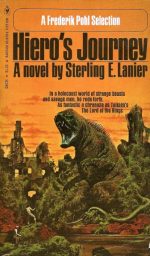 Gallery post for a while, I thought I’d change things up a bit and go for something a little different this week. Sterling Lanier’s 1973 novel, Hiero’s Journey, is a work of post-apocalyptic science fantasy of which I am very fond. It also enjoys the unique distinction of being mentioned by name in both Gary Gygax’s Appendix N and Tom Wham and Timothy Jones’s foreword to the first edition of Gamma World.
Gallery post for a while, I thought I’d change things up a bit and go for something a little different this week. Sterling Lanier’s 1973 novel, Hiero’s Journey, is a work of post-apocalyptic science fantasy of which I am very fond. It also enjoys the unique distinction of being mentioned by name in both Gary Gygax’s Appendix N and Tom Wham and Timothy Jones’s foreword to the first edition of Gamma World.
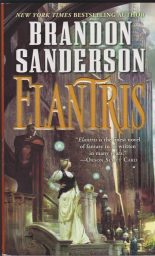 Fantasy (Sprague de Camp Fan): I recently heard about Brandon Sanderson and his $42 million Kickstarter and decided I should read him. I started with his first book: Elantris. Before I start reviewing the book, I want to give some background about the author.
Fantasy (Sprague de Camp Fan): I recently heard about Brandon Sanderson and his $42 million Kickstarter and decided I should read him. I started with his first book: Elantris. Before I start reviewing the book, I want to give some background about the author.
Firearms (Spec Ops Magazine): The MP-443 Grach, also known as the “PYa” or “Yarygin Pistol,” is the standard military-issue sidearm in Russia. This semi-automatic pistol boasts a high capacity and utilizes a double-action, short-recoil design. The locking mechanism of the barrel and slide follows a simplified Colt-Browning design, which is also present in many other modern pistols like the SIG Sauer and Glock families.
also known as the “PYa” or “Yarygin Pistol,” is the standard military-issue sidearm in Russia. This semi-automatic pistol boasts a high capacity and utilizes a double-action, short-recoil design. The locking mechanism of the barrel and slide follows a simplified Colt-Browning design, which is also present in many other modern pistols like the SIG Sauer and Glock families.
 Science Fiction (Future War Stories): In one of the longest running and most iconic military science fiction TV shows of all time, one of the primary weapons of the key alien race is a direct energy weapon based on a staff melee weapon. This is the weapon of the slave-warriors of the Jaffa in service to their serpent masters, the Goa’uld. First seen in the original 1994 feature film, Stargate, the DE staff weapon has been featured in all of the entries into the massive Stargate Franchise. These Jaffa staff weapons have become one of the most iconic sci-fi weapons and it is high time we discussed the Ma’Tok Staff of the Jaffa warriors.
Science Fiction (Future War Stories): In one of the longest running and most iconic military science fiction TV shows of all time, one of the primary weapons of the key alien race is a direct energy weapon based on a staff melee weapon. This is the weapon of the slave-warriors of the Jaffa in service to their serpent masters, the Goa’uld. First seen in the original 1994 feature film, Stargate, the DE staff weapon has been featured in all of the entries into the massive Stargate Franchise. These Jaffa staff weapons have become one of the most iconic sci-fi weapons and it is high time we discussed the Ma’Tok Staff of the Jaffa warriors.
Pulp (Vintage Pop Fictions): Theodore Roscoe (1906-1992) was an American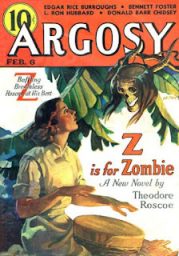 pulp writer and also a distinguished naval historian. Like most pulp writers he worked in a number of different genres. If you wanted to make a decent living as a pulp writer it was desirable to be able to sell stories to as many different pulp magazines as possible.
pulp writer and also a distinguished naval historian. Like most pulp writers he worked in a number of different genres. If you wanted to make a decent living as a pulp writer it was desirable to be able to sell stories to as many different pulp magazines as possible.
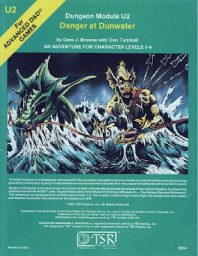 D&D (Grognardia): Released in 1982, Danger at Dunwater is the sequel to The Sinister Secret of Saltmarsh and the middle adventure in the trilogy of U-series modules. Indeed, action picks up almost immediately after the events of its predecessor, which makes it quite easy to use at the table. Equally significant is that the module encourages and rewards thoughtful play, just as Saltmarsh did.
D&D (Grognardia): Released in 1982, Danger at Dunwater is the sequel to The Sinister Secret of Saltmarsh and the middle adventure in the trilogy of U-series modules. Indeed, action picks up almost immediately after the events of its predecessor, which makes it quite easy to use at the table. Equally significant is that the module encourages and rewards thoughtful play, just as Saltmarsh did.
Fantasy (The Library Ladder): Nine classic fantasy fiction books I recommend for children. These are some of the books that shaped and inspired the popularity of the fantasy genre today. Amazon links to the books are provided below.
James Bond (007 Magazine): Now comes word that the James Bond novels are being altered to some degree to adapt the language to more modern sensabilities. Is this censorship? Is the another example of “woke culture” run amok?
Conan (Paperback Warrior): One of the second to last stories in Conan is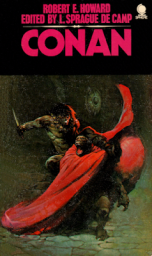 “The Hand of Nergal”. It was originally a fragmented story authored by Howard in the 1930s. Lin Carter completed the story and titled it. Along with appearances in Conan, “The Hand of Nergal” was also featured in The Conan Chronicles (1989) and Beyond the Gates of Dream (1969).
“The Hand of Nergal”. It was originally a fragmented story authored by Howard in the 1930s. Lin Carter completed the story and titled it. Along with appearances in Conan, “The Hand of Nergal” was also featured in The Conan Chronicles (1989) and Beyond the Gates of Dream (1969).
RPG (Walker’s Retreat): For nearly 50 years the tabletop role-playing game business has talked a good deal about this medium and its hobby. It promised an endless entertainment medium of adventure, excitement, and imaginiative play without peer.
Today, despite the recent success of the dominant company (Magic-Users By The Water, “MuBTW” hereafter) and brand (Current Edition D&D), it has long since been surpassed by competing media that also sell “RPGs”.
Star Wars (Arkhaven Comics): The start of the new season is no better than lackluster. This isn’t a surprise given the state of the trainwreck that is LucasFilm. The second season ended with a huge bang. Luke Skywalker, the real Luke Skywalker, not the broken-down hobo from Third Trilogy, made a cameo that blew the doors off. People were actually signing up for Disney Plus on the basis of it. It looked like Star Wars was starting to turn itself around.
lackluster. This isn’t a surprise given the state of the trainwreck that is LucasFilm. The second season ended with a huge bang. Luke Skywalker, the real Luke Skywalker, not the broken-down hobo from Third Trilogy, made a cameo that blew the doors off. People were actually signing up for Disney Plus on the basis of it. It looked like Star Wars was starting to turn itself around.
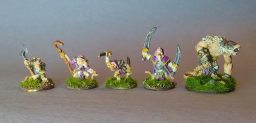 Gaming Figurines (Jon Mollison): We are going to have so much fun with these little Splintered Light vermin. The whole pack of them took just under a month to paint up – the glories of 15mm!
Gaming Figurines (Jon Mollison): We are going to have so much fun with these little Splintered Light vermin. The whole pack of them took just under a month to paint up – the glories of 15mm!
Classics (Brain Leakage): My all-time favorite director is John Carpenter,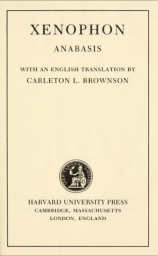 but a very close second is Walter Hill. No one does “ensemble action” better, and the fact we never got to see his version of The Magnificent Seven—co-written with a screenwriter for The Dirty Dozen—is a crime against cinema.
but a very close second is Walter Hill. No one does “ensemble action” better, and the fact we never got to see his version of The Magnificent Seven—co-written with a screenwriter for The Dirty Dozen—is a crime against cinema.
Cinema (Wasteland & Sky): Bandwagon is a movie about a band, inspired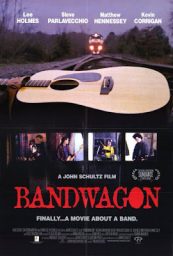 by director John Schultz’s time in a band of his own, back in the Midwest in the early 1980s. This story follows a young band from the same time period who become a unit, learn how to work together, and find their sound as the tour across the US. Just like the band portrayed in the movie, Circus Monkey, the film is an underground favorite, despite the premise that has been done millions of times. It still manages to stand out.
by director John Schultz’s time in a band of his own, back in the Midwest in the early 1980s. This story follows a young band from the same time period who become a unit, learn how to work together, and find their sound as the tour across the US. Just like the band portrayed in the movie, Circus Monkey, the film is an underground favorite, despite the premise that has been done millions of times. It still manages to stand out.
T.V. (John C. Wright): Babylon 5 and the Two Questions On this foray against the Mountains of Madness John and Jason discuss the TV series Babylon 5 and the two questions posted by the Vorlons and the Shadows to those they would enlist in to their cause. The Vorlons question “Who are you?” and the Shadows question “What do you want?”
Authors (DMR Books): Please introduce yourself and tell us about your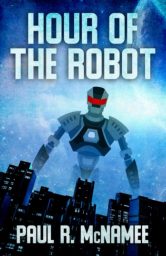 background as a writer.
background as a writer.
I’m Paul R. McNamee. My writing had been sporadic most of my adult life. Around 2014, I finally got steady about it. Slower than I like, but I tend to have (at least) two short stories appearing per year on average. In 2021, my debut novel, Hour of the Robot, came out.
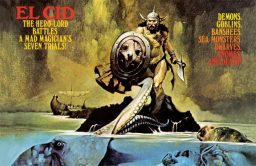 Comic Books (Dark Worlds Quarterly): With Dax coming to an end in 1973, the days of Sword & Sorcery at Warren might have come to an end. The company simply reprinted all of his adventures, rather than come up with new material. 1974 produced only one new Sword & Sorcery story early in February. A year went by and the company welcomed Archie Goodwin back for a short stint. Goodwin, who had always been pro-S&S, didn’t seem interested. The works of Edgar Allan Poe got the focus rather than Robert E. Howard.
Comic Books (Dark Worlds Quarterly): With Dax coming to an end in 1973, the days of Sword & Sorcery at Warren might have come to an end. The company simply reprinted all of his adventures, rather than come up with new material. 1974 produced only one new Sword & Sorcery story early in February. A year went by and the company welcomed Archie Goodwin back for a short stint. Goodwin, who had always been pro-S&S, didn’t seem interested. The works of Edgar Allan Poe got the focus rather than Robert E. Howard.
D&D (Goodman Games): Gary and Dave Arneson co-created Dungeons &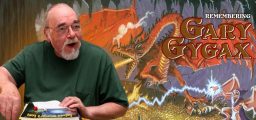 Dragons, and Gary’s stamp — and authorship — can be seen in the three core books of AD&D: The Players Handbook, The Monster Manual, and the everything-but-the kitchen-sink uber-tome The Dungeon Master’s Guide. With just those three books, players were given the keys to a kingdom of the imagination that has unleashed the fury of a million Fireballs, forever altered things with a reality-defying amount of Wishes, and Charm Personed entire generations of gamers that would come to call themselves “role-players.”
Dragons, and Gary’s stamp — and authorship — can be seen in the three core books of AD&D: The Players Handbook, The Monster Manual, and the everything-but-the kitchen-sink uber-tome The Dungeon Master’s Guide. With just those three books, players were given the keys to a kingdom of the imagination that has unleashed the fury of a million Fireballs, forever altered things with a reality-defying amount of Wishes, and Charm Personed entire generations of gamers that would come to call themselves “role-players.”
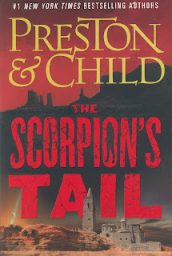 Review (Pulp Fiction Reviews): This is the second thriller in the Special Agent Pendergast spin-off series starring two of his best supporting characters. The first being Archeologist Nora Kelly who was around from the first Pendergast adventure teaming up with his young protégé, newly minted FBI Agent Corrie Swanson. Though why the publisher opts to label this the “Nora Kelly” series is beyond my logic. It really should be the “Kelly – Swanson” series. Oh well, the eccentricities of publishers.
Review (Pulp Fiction Reviews): This is the second thriller in the Special Agent Pendergast spin-off series starring two of his best supporting characters. The first being Archeologist Nora Kelly who was around from the first Pendergast adventure teaming up with his young protégé, newly minted FBI Agent Corrie Swanson. Though why the publisher opts to label this the “Nora Kelly” series is beyond my logic. It really should be the “Kelly – Swanson” series. Oh well, the eccentricities of publishers.
Western (Chimney Sweep Reader): During the Mexican-American border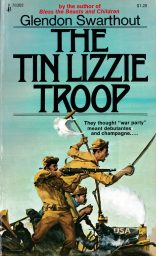 campaign of 1916 during which 100,000 national guardsmen were called up to defend the US against raiding Mexican bandits, an incident took place that resulted in the first ever mechanized infantry engagement. This novel, by American writer Glendon Swarthout, takes a humorous (and fictionalized) view of that event, resulting in a fun read indeed.
campaign of 1916 during which 100,000 national guardsmen were called up to defend the US against raiding Mexican bandits, an incident took place that resulted in the first ever mechanized infantry engagement. This novel, by American writer Glendon Swarthout, takes a humorous (and fictionalized) view of that event, resulting in a fun read indeed.
Western (Western Fiction Review): Johnstone brings together a captivating bunch of soldiers to face a much larger force of bandits and Apache in a story full of seemingly hopeless situations and disillusioned officers and troopers. Most of these characters imbibe in alcohol to see them through each and every day. When a clerical error sends a fresh-faced officer straight from West Point to the fort, he is aghast at the situation he finds he finds himself in.
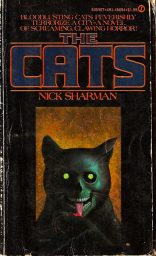 Horror (Too Much Horror Fiction): Scott Grønmark was his name and writing pulp horror paperbacks under the pseudonym “Nick Sharman” was his game. Born in Oslo, Norway, in 1952, he was working in the PR department of New English Library (which is why of course he had to use a pseudonym) when he began his published career with The Cats. It was originally published by NEL in 1977 (below), and then by Signet in America in May 1979.
Horror (Too Much Horror Fiction): Scott Grønmark was his name and writing pulp horror paperbacks under the pseudonym “Nick Sharman” was his game. Born in Oslo, Norway, in 1952, he was working in the PR department of New English Library (which is why of course he had to use a pseudonym) when he began his published career with The Cats. It was originally published by NEL in 1977 (below), and then by Signet in America in May 1979.
Fiction (Glorious Trash): If you’re looking for an ‘80s ninja fest with guys in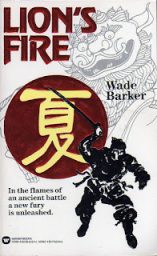 black costumes jumping through the air and slashing at each other with swords, then you’ll likely be disappointed in this second installment of The Year Of The Ninja Master. But if you’re looking for a quasi-mystical excursion into unfathomable prose, plus a lot of travelogue about Isreal, then chances are you’re gonna love it!
black costumes jumping through the air and slashing at each other with swords, then you’ll likely be disappointed in this second installment of The Year Of The Ninja Master. But if you’re looking for a quasi-mystical excursion into unfathomable prose, plus a lot of travelogue about Isreal, then chances are you’re gonna love it!
I appreciate the links to Dan Davis and Tjhe Library Ladder!